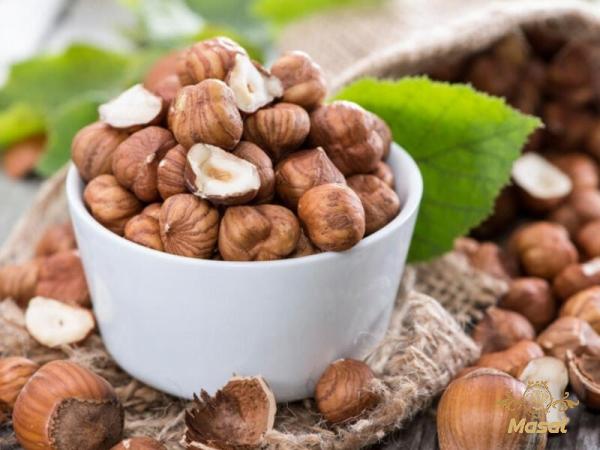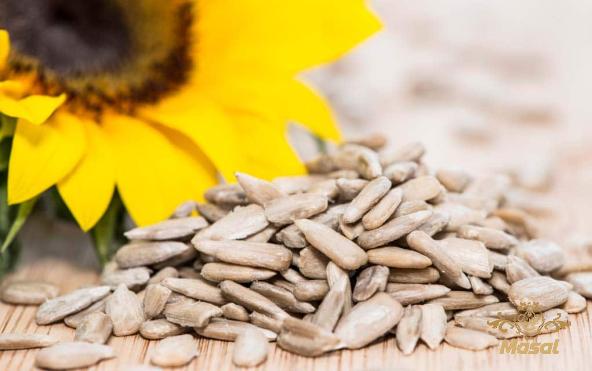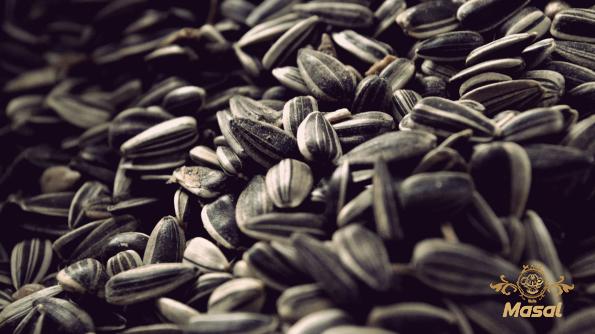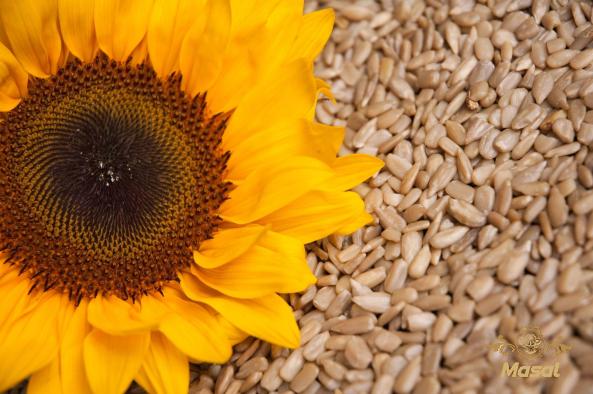Hazelnuts are a popular and versatile nut that serves as a key ingredient in various culinary preparations and a nutritious snack. One crucial aspect of hazelnuts is their kernel weight, which holds significance for both producers and consumers. Understanding the factors affecting kernel weight, methods for measurement, and the implications of kernel weight can help optimize hazelnut production, improve quality control, and enhance consumer satisfaction. This article provides a summary of hazelnut kernel weight, shedding light on its importance in the industry. Factors Affecting Hazelnut Kernel Weight: Several factors influence the weight of hazelnut kernels, including genetics, orchard management practices, environmental factors, and post-harvest techniques. 1. Genetic Factors: Different hazelnut varieties exhibit variations in kernel weight. Breeders have been working on developing improved cultivars with desirable nut characteristics, including higher kernel weight. The inherent genetic potential of a variety determines its maximum kernel weight. 2. Orchard Management: The health and vigor of hazelnut trees are crucial for optimal kernel weight. Factors such as proper nutrition, irrigation, pruning, pest, and disease control, and adequate sunlight can significantly affect nut quality, including kernel weight. 3. Environmental Factors: Environmental conditions during the growing season impact hazelnut kernel weight. Adequate rainfall, temperature, and sunlight promote healthy nut development, resulting in larger kernels. Conversely, unfavorable weather conditions, such as drought or excessive rainfall, can lead to reduced kernel weight. 4. Post-Harvest Techniques: Post-harvest practices, including harvesting, sorting, drying, and storage, influence hazelnut kernel weight. Proper handling and timely processing minimize the risk of kernel damage, maintaining the weight and quality of the nuts. Measurement Methods for Hazelnut Kernel Weight: Accurate measurement of hazelnut kernel weight is crucial for quality assessment, market pricing, and crop management. Various methods are employed to determine hazelnut kernel weight, with some of the commonly used techniques being: 1. Weighing Whole Nuts: This method involves weighing a representative sample of whole nuts using a digital scale.

nut
 The average kernel weight is then calculated by subtracting the weight of the shell from the total weight of the nut. 2. Percentage Kernel Weight: In this method, samples of whole nuts are shelled, and the weight of the kernels is determined. The percentage kernel weight is then calculated by dividing the kernel weight by the total nut weight and multiplying by 100. 3. Mechanical Kernel Extraction: Mechanical kernel extraction involves the use of specialized equipment to separate the kernel from the shell. The extracted kernels are then weighed to obtain individual kernel weights, providing a more accurate measure of kernel weight variations within a batch. Significance of Hazelnut Kernel Weight: The kernel weight of hazelnuts holds significance for both producers and consumers, impacting various areas of the hazelnut industry: 1. Nutritional Content: The weight of the hazelnut kernel directly influences its nutritional composition. Larger kernels generally contain more healthy fats, protein, and other essential nutrients, making them more valuable from a nutritional standpoint. 2. Market Pricing: Kernel weight is a crucial factor in determining the market value of hazelnuts. Larger kernel sizes command higher prices due to their perceived superior quality and enhanced aesthetic appeal. 3. Yield and Profits: For hazelnut producers, achieving higher kernel weights translates into improved yields and profitability. Higher kernel weights mean more usable product per nut, maximizing the overall output and potential revenue. 4. Product Quality: Kernel weight is an important component of nut quality. By focusing on factors influencing kernel weight, producers can enhance the overall quality of their hazelnuts, ensuring consistent product satisfaction among consumers. Conclusion: Hazelnut kernel weight plays a crucial role in hazelnut production, quality assessment, and consumer satisfaction. Understanding and managing the factors influencing kernel weight, employing accurate measurement methods, and recognizing the significance of kernel weight can help optimize hazelnut production, improve market competitiveness, and satisfy consumer demands. By focusing on kernel weight, hazelnut producers can ensure the delivery of high-quality and nutritious nuts, contributing to a thriving hazelnut industry. Hazelnuts are a popular and versatile nut that serves as a key ingredient in various culinary preparations and a nutritious snack. One crucial aspect of hazelnuts is their kernel weight, which holds significance for both producers and consumers. Understanding the factors affecting kernel weight, methods for measurement, and the implications of kernel weight can help optimize hazelnut production, improve quality control, and enhance consumer satisfaction. This article provides a detailed analysis of hazelnut kernel weight, shedding light on its importance in the industry.
The average kernel weight is then calculated by subtracting the weight of the shell from the total weight of the nut. 2. Percentage Kernel Weight: In this method, samples of whole nuts are shelled, and the weight of the kernels is determined. The percentage kernel weight is then calculated by dividing the kernel weight by the total nut weight and multiplying by 100. 3. Mechanical Kernel Extraction: Mechanical kernel extraction involves the use of specialized equipment to separate the kernel from the shell. The extracted kernels are then weighed to obtain individual kernel weights, providing a more accurate measure of kernel weight variations within a batch. Significance of Hazelnut Kernel Weight: The kernel weight of hazelnuts holds significance for both producers and consumers, impacting various areas of the hazelnut industry: 1. Nutritional Content: The weight of the hazelnut kernel directly influences its nutritional composition. Larger kernels generally contain more healthy fats, protein, and other essential nutrients, making them more valuable from a nutritional standpoint. 2. Market Pricing: Kernel weight is a crucial factor in determining the market value of hazelnuts. Larger kernel sizes command higher prices due to their perceived superior quality and enhanced aesthetic appeal. 3. Yield and Profits: For hazelnut producers, achieving higher kernel weights translates into improved yields and profitability. Higher kernel weights mean more usable product per nut, maximizing the overall output and potential revenue. 4. Product Quality: Kernel weight is an important component of nut quality. By focusing on factors influencing kernel weight, producers can enhance the overall quality of their hazelnuts, ensuring consistent product satisfaction among consumers. Conclusion: Hazelnut kernel weight plays a crucial role in hazelnut production, quality assessment, and consumer satisfaction. Understanding and managing the factors influencing kernel weight, employing accurate measurement methods, and recognizing the significance of kernel weight can help optimize hazelnut production, improve market competitiveness, and satisfy consumer demands. By focusing on kernel weight, hazelnut producers can ensure the delivery of high-quality and nutritious nuts, contributing to a thriving hazelnut industry. Hazelnuts are a popular and versatile nut that serves as a key ingredient in various culinary preparations and a nutritious snack. One crucial aspect of hazelnuts is their kernel weight, which holds significance for both producers and consumers. Understanding the factors affecting kernel weight, methods for measurement, and the implications of kernel weight can help optimize hazelnut production, improve quality control, and enhance consumer satisfaction. This article provides a detailed analysis of hazelnut kernel weight, shedding light on its importance in the industry.
Specifications of nut
 Factors Affecting Hazelnut Kernel Weight: 1. Genetic Factors: Different hazelnut varieties exhibit variations in kernel weight due to their genetic makeup. Breeders have been working on developing improved cultivars with desirable nut characteristics, including higher kernel weight. The inherent genetic potential of a variety determines its maximum kernel weight. Producers should select cultivars known for favorable kernel weight attributes to maximize yield potential. 2. Orchard Management: Proper orchard management practices play a vital role in determining hazelnut kernel weight. Nutrients, irrigation, and regular pruning directly impact tree health and vigor, which ultimately influences nut quality, including kernel weight. Regular soil testing and implementing appropriate fertilization regimes can ensure tree health and optimize kernel weight. 3. Environmental Factors: Environmental conditions during the growing season significantly affect hazelnut kernel weight. Adequate rainfall, optimal temperature, and sufficient sunlight promote healthy nut development, resulting in larger kernels. Timely pest and disease control measures are also essential to prevent any damage that may affect the weight and quality of the kernels. 4. Post-Harvest Techniques: Post-harvest practices, including harvesting, sorting, drying, and storage, have a significant impact on hazelnut kernel weight. Proper handling and timely processing minimize the risk of kernel damage, maintaining the weight and quality of the nuts. Careful sorting and processing also facilitate the separation of inferior-quality nuts, which can lead to higher overall kernel weight. Measurement Methods for Hazelnut Kernel Weight: 1. Weighing Whole Nuts: To measure hazelnut kernel weight, one common method is to weigh a representative sample of whole nuts using a digital scale. The average kernel weight is then calculated by subtracting the weight of the shell from the total weight of the nut. This method provides a quick and effective way to estimate the kernel weight of a batch, although it does not account for variations within individual nuts. 2. Percentage Kernel Weight: Another commonly used measurement method involves shelling a sample of whole nuts and determining the weight of the kernels. The percentage kernel weight is then calculated by dividing the kernel weight by the total nut weight and multiplying by 100. This method provides a more accurate measure of kernel weight variations within a batch compared to weighing whole nuts. 3. Mechanical Kernel Extraction: Mechanical kernel extraction involves the use of specialized equipment to separate the kernel from the shell. The extracted kernels are then weighed to obtain individual kernel weights.
Factors Affecting Hazelnut Kernel Weight: 1. Genetic Factors: Different hazelnut varieties exhibit variations in kernel weight due to their genetic makeup. Breeders have been working on developing improved cultivars with desirable nut characteristics, including higher kernel weight. The inherent genetic potential of a variety determines its maximum kernel weight. Producers should select cultivars known for favorable kernel weight attributes to maximize yield potential. 2. Orchard Management: Proper orchard management practices play a vital role in determining hazelnut kernel weight. Nutrients, irrigation, and regular pruning directly impact tree health and vigor, which ultimately influences nut quality, including kernel weight. Regular soil testing and implementing appropriate fertilization regimes can ensure tree health and optimize kernel weight. 3. Environmental Factors: Environmental conditions during the growing season significantly affect hazelnut kernel weight. Adequate rainfall, optimal temperature, and sufficient sunlight promote healthy nut development, resulting in larger kernels. Timely pest and disease control measures are also essential to prevent any damage that may affect the weight and quality of the kernels. 4. Post-Harvest Techniques: Post-harvest practices, including harvesting, sorting, drying, and storage, have a significant impact on hazelnut kernel weight. Proper handling and timely processing minimize the risk of kernel damage, maintaining the weight and quality of the nuts. Careful sorting and processing also facilitate the separation of inferior-quality nuts, which can lead to higher overall kernel weight. Measurement Methods for Hazelnut Kernel Weight: 1. Weighing Whole Nuts: To measure hazelnut kernel weight, one common method is to weigh a representative sample of whole nuts using a digital scale. The average kernel weight is then calculated by subtracting the weight of the shell from the total weight of the nut. This method provides a quick and effective way to estimate the kernel weight of a batch, although it does not account for variations within individual nuts. 2. Percentage Kernel Weight: Another commonly used measurement method involves shelling a sample of whole nuts and determining the weight of the kernels. The percentage kernel weight is then calculated by dividing the kernel weight by the total nut weight and multiplying by 100. This method provides a more accurate measure of kernel weight variations within a batch compared to weighing whole nuts. 3. Mechanical Kernel Extraction: Mechanical kernel extraction involves the use of specialized equipment to separate the kernel from the shell. The extracted kernels are then weighed to obtain individual kernel weights.
buy nut
 This method provides the most accurate measure of kernel weight and allows for precise evaluation of weight variations within a batch. However, it requires specific machinery and may not be practical for smaller-scale operations. Significance of Hazelnut Kernel Weight: 1. Nutritional Content: The weight of the hazelnut kernel directly influences its nutritional composition. Larger kernels generally contain more healthy fats, protein, and other essential nutrients, making them more valuable from a nutritional standpoint. High-quality, nutrient-dense hazelnuts contribute to consumer satisfaction and offer a competitive advantage for producers. 2. Market Pricing: Kernel weight is a crucial factor in determining the market value of hazelnuts. Larger kernel sizes command higher prices due to their perceived superior quality and enhanced aesthetic appeal. Producers with consistently higher kernel weights can demand a premium for their product and achieve better returns in the market. 3. Yield and Profits: For hazelnut producers, achieving higher kernel weights translates into improved yields and profitability. Higher kernel weights mean more usable product per nut, maximizing the overall output and potential revenue. Optimizing factors like genetics, orchard management, and post-harvest techniques to increase kernel weight directly contributes to higher profitability. 4. Product Quality: Kernel weight is an essential component of nut quality. By focusing on factors influencing kernel weight, producers can enhance the overall quality of their hazelnuts, ensuring consistent product satisfaction among consumers. High-quality nuts with desirable kernel weights are more likely to find favor with consumers, leading to repeat purchases and positive brand reputation. 5. Export Potential: Countries that produce hazelnuts for export can significantly benefit from emphasizing higher kernel weights. On the international market, larger kernel sizes are often preferred by manufacturers and food processors due to their ease of processing and improved yield for value-added products. By consistently producing hazelnuts with higher kernel weights, export-oriented producers can tap into lucrative markets and increase their global market share. Conclusion: Hazelnut kernel weight plays a crucial role in hazelnut production, quality assessment, and consumer satisfaction. Understanding and managing the factors that influence kernel weight, employing accurate measurement methods, and recognizing its significance can help optimize hazelnut production, improve market competitiveness, and satisfy consumer demands. By focusing on kernel weight, hazelnut producers can ensure the delivery of high-quality and nutritious nuts, contributing to a thriving hazelnut industry.
This method provides the most accurate measure of kernel weight and allows for precise evaluation of weight variations within a batch. However, it requires specific machinery and may not be practical for smaller-scale operations. Significance of Hazelnut Kernel Weight: 1. Nutritional Content: The weight of the hazelnut kernel directly influences its nutritional composition. Larger kernels generally contain more healthy fats, protein, and other essential nutrients, making them more valuable from a nutritional standpoint. High-quality, nutrient-dense hazelnuts contribute to consumer satisfaction and offer a competitive advantage for producers. 2. Market Pricing: Kernel weight is a crucial factor in determining the market value of hazelnuts. Larger kernel sizes command higher prices due to their perceived superior quality and enhanced aesthetic appeal. Producers with consistently higher kernel weights can demand a premium for their product and achieve better returns in the market. 3. Yield and Profits: For hazelnut producers, achieving higher kernel weights translates into improved yields and profitability. Higher kernel weights mean more usable product per nut, maximizing the overall output and potential revenue. Optimizing factors like genetics, orchard management, and post-harvest techniques to increase kernel weight directly contributes to higher profitability. 4. Product Quality: Kernel weight is an essential component of nut quality. By focusing on factors influencing kernel weight, producers can enhance the overall quality of their hazelnuts, ensuring consistent product satisfaction among consumers. High-quality nuts with desirable kernel weights are more likely to find favor with consumers, leading to repeat purchases and positive brand reputation. 5. Export Potential: Countries that produce hazelnuts for export can significantly benefit from emphasizing higher kernel weights. On the international market, larger kernel sizes are often preferred by manufacturers and food processors due to their ease of processing and improved yield for value-added products. By consistently producing hazelnuts with higher kernel weights, export-oriented producers can tap into lucrative markets and increase their global market share. Conclusion: Hazelnut kernel weight plays a crucial role in hazelnut production, quality assessment, and consumer satisfaction. Understanding and managing the factors that influence kernel weight, employing accurate measurement methods, and recognizing its significance can help optimize hazelnut production, improve market competitiveness, and satisfy consumer demands. By focusing on kernel weight, hazelnut producers can ensure the delivery of high-quality and nutritious nuts, contributing to a thriving hazelnut industry.










Your comment submitted.